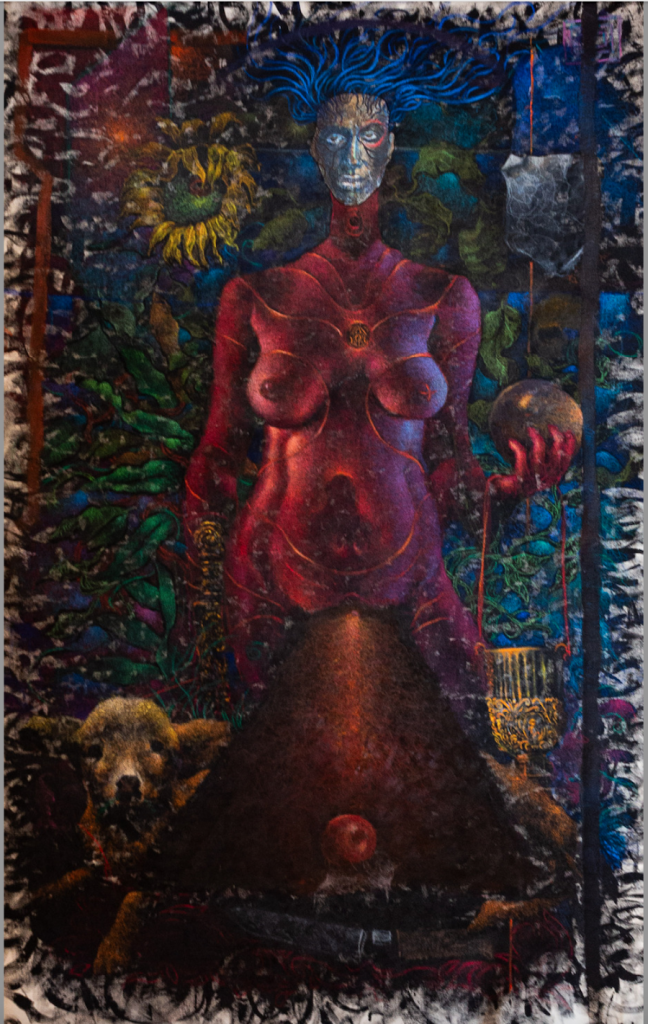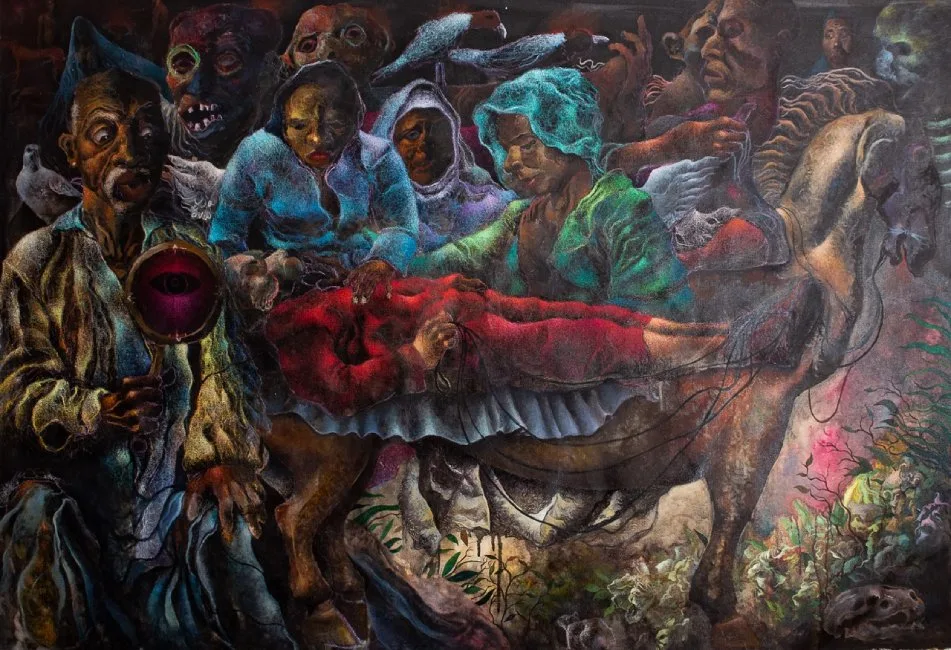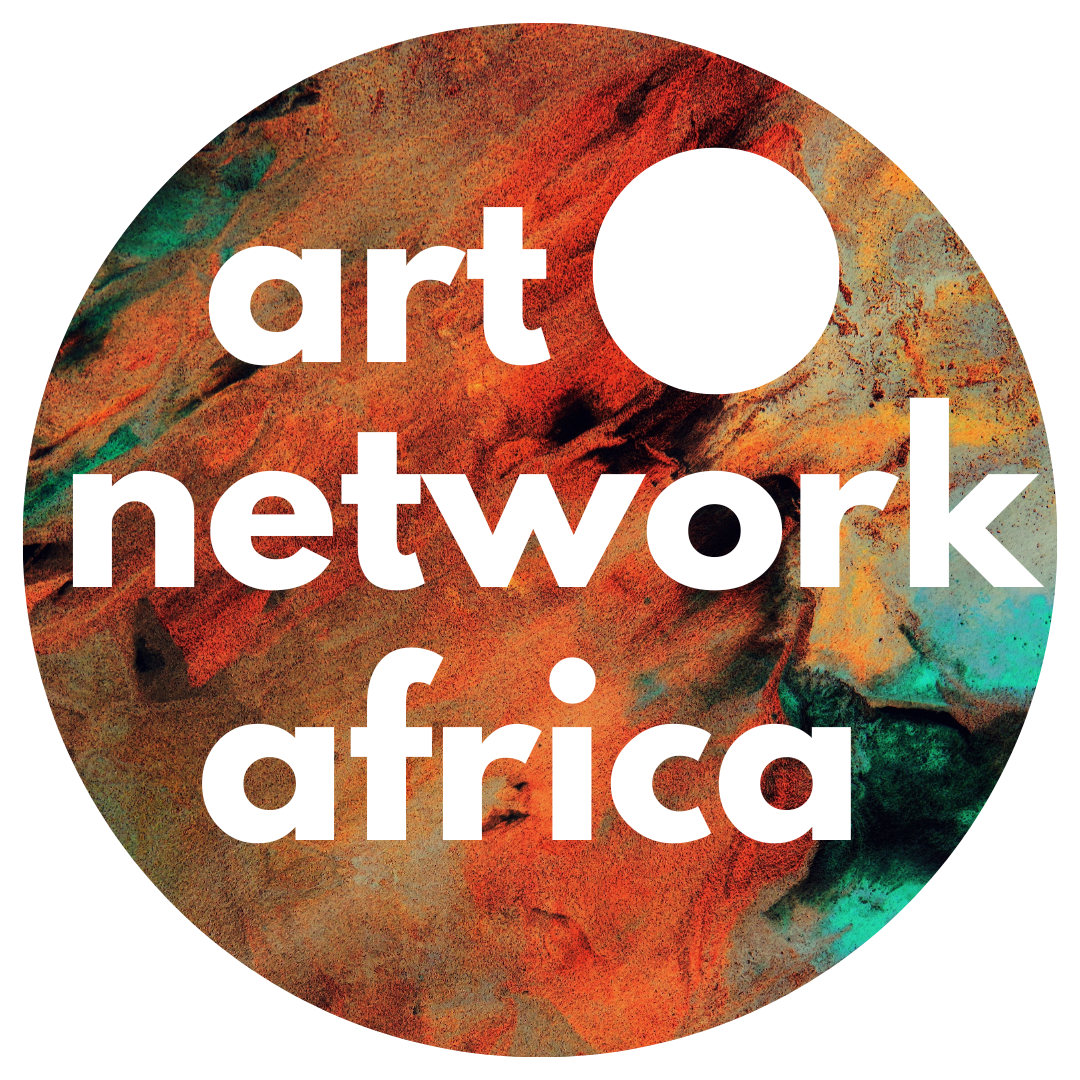Contemporary human experience stretches beyond what we can fully grasp. To explain this, Bernard Mwangi (popularly known as Mwass Githinji) draws inspiration from this complexity. I’ve noticed a sudden urge among artists to look inward, exploring their complexity as regals, participants, and humans. His cultural lab, Studio 1.6—named after the Fibonacci theory and the golden ratio (G.R.)—shares this curiosity. Like his work, the lab studies the delicate balance of nature, art, and design in today’s contemporary landscape.

He merges figurative approaches to unpack layers of contemporary Black life. To live in modern Nairobi, one cannot ignore the deep melancholy haunting the human race. Nairobi, a harbor and refuge for many East Africans, struggles with ongoing social politics that neglect, dismiss, and mislabel the real as mere emotion.
“Someone said an artist is an observer, and so is a philosopher. By studying and reflecting on how I perceive these matters, I sometimes dissect them with my contemporaries. When they start to make sense, I carefully curate my thoughts and emotions on these topics onto the canvas,” he shares in an interview with the-System magazine.
He doesn’t ignore the rural landscape, which holds nearly 70% of Kenya’s population. Mwass sees his practice as witness, participant, and human—engraved with the joy and melancholy of our existence. His artworks feel dreamlike and transcendent. They blend themes of mystery, sacredness, memory, and self-identity to cope with our sociopolitical present. He fuses traditional East African art with sacred, present, and futuristic elements into expansive canvases. Some works resemble tarot cards and like tarot, they invite diverse thinking, rooted in ancestral knowledge, nature, and design.

Mixed Media
153 × 100 cm. Image courtesy of Artsy
“I see the Bible as a beautiful storybook. I mix it with Agikuyu mythologies, a bit of Greek myth, and anything else that spices up my imagination and ideologies in one piece,” Mwass continues.
Through his practice, he discovered that each medium speaks differently. He prefers direct pastel strokes on black canvas—a reversed method that works from dark to light. This process mirrors both his personal journey and the ethereal power found in dark objects—stones, silence, and sincere human connection.
His art draws deeply from Agikuyu mythologies, often using language to connect with the wider East African diaspora. Mwass reflects a growing body of East African artistic thought grounded in ancestral memory, creative risk, and research. Through his work, he holds the modern human experience up to both historical and futuristic light.

Mwass just completed his solo exhibition Beasts and Petals at Redhill Art Gallery. The show explored life’s heavy struggles, balanced with unnoticed joys. In Beasts and Petals, Mwass honors life’s beauty, reminding us that petals will bloom, the sun will shine, and tomorrow always comes. That quiet hope grounds his work as a key cultural heritage in today’s landscape.
The present is the mystery. We’ve already traveled to the past—and the future.


